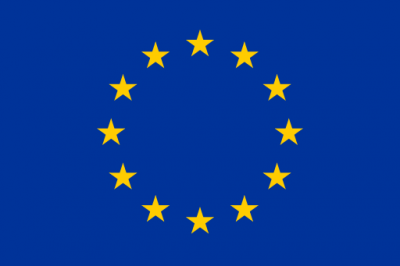Europe Mulls its First Climate Law
What would it do in terms of emissions targets and likely actual mitigation?
 The European Union is, if one treats it as a country, the world’s third greatest emitter of greenhouse gases (GHGs). It has also been a leader in emissions reduction (“mitigation”), and its per capita emissions are merely 43% of the US’s. The EU government is presently considering a major new climate law that will set the trajectory of its climate policy for the next thirty years. What would it do, both in terms of emissions targets and in likely actual mitigation?
The European Union is, if one treats it as a country, the world’s third greatest emitter of greenhouse gases (GHGs). It has also been a leader in emissions reduction (“mitigation”), and its per capita emissions are merely 43% of the US’s. The EU government is presently considering a major new climate law that will set the trajectory of its climate policy for the next thirty years. What would it do, both in terms of emissions targets and in likely actual mitigation?
As a quick background: existing EU climate policy has a series of collective targets for GHG emissions, each relative to those of 1990 (as well as targets for renewable energy and energy efficiency, not discussed here). Its 2020 emissions target is a 20% reduction, which it will meet. For 2030, the EU is committed to a 40% cut, which also serves as its voluntary mitigation contribution under the first (2015) cycle of the Paris Agreement. Finally, the EU presently has nonbinding mitigation targets of 60% for 2040 and 80-95% for 2050.
The EU reduces its emissions through two primary mechanisms. The Emissions Trading System is a cap-and-trade system that covers specific sectors such as major stationary sources and airlines, amounting to about 45% of emissions. Firms receive or buy emissions allowances, which they can trade and which gradually decrease in total quantity. The remaining emissions — such as transportation and agriculture — are addressed by the EU’s Effort Sharing mechanism. This is a set of country-specific caps for each year, which the Member States try to achieve through national policy and, if necessary, international trading.

As part of the next cycle of voluntary contributions under the Paris Agreement, to be set this year, the EU government wishes to make the 2030 and 2050 mitigation targets more ambitious and, in the latter’s case, legally binding. This has been in the works since 2018, when the European Commission (the EU’s executive leadership) proposed climate- and emissions-neutrality by 2050. This net zero target, as well as a 50 to 55% mitigation target by 2030, was later endorsed by the European Parliament (1, 2, 3) and the European Council (1, 2 [PDF]) (the EU’s two legislative bodies). And the new president of the Commission, Ursula von der Leyen, made these provisions part of her six-point platform [PDF] as a candidate. Last week, the Commission put forth the 2050 target as part of its draft European Climate Law [PDF] (officially a Regulation), which also requires the Commission to “explore options for a new 2030 target of 50 to 55% emission reductions.”
The EU (and Europe more generally) is taking seriously the Paris Agreement’s commitment “to achieve a balance between anthropogenic emissions by sources and removals by sinks of greenhouse gases in the second half of this century.” To the extent that this increased ambition translates into mitigation, it should be commended and replicated.
However, ambition is (relatively) easy talk whereas mitigation is the difficult action. And this will be difficult for three reasons. One is that, although the original targets seem linear, with 20% of 1990’s amount mitigated each decade, they actually accelerate dramatically. Because the EU population and economy will grow, the better metric is emissions per euro of economic activity. By my math, this “emissions intensity of economic activity” since 1990 has reduced 2% annually. Assuming modest 2% future annual economic growth and exponential decay of emissions (i.e. they decrease by a certain percent each year), these targets will require the EU’s emissions intensity of economic activity the annually reduce at these rates:
| year | original target (relative to 1990) | required annual emissions intensity reduction | revised target (relative to 1990) | required annual emissions intensity reduction |
| 2020 | 20% | 2% | ||
| 2030 | 40% | 5% | 50%+ | 7% |
| 2040 | 60% | 8% | ||
| 2050 | 80%+ | 12% | ~100% | ~36% |
(Note: I needed for calculations a small amount of emissions in 2050, as exponential decay never reaches zero. Here I used a 99% reduction)
When viewed this way, the current targets are already ambitious; the new ones extremely so.
Another reason that this will be difficult is that mitigation will become harder and more expensive. This is because the easy and inexpensive options (think of insulating buildings) are done first, and then only the relatively hard and expensive ones (think of aviation and cement production) will remain. In economic terms, marginal costs increase.
The third and final reason that these ambitious goals will be difficult to achieve is the distribution of the requisite mitigation among the EU’s Member States. Mitigation (and CDR) is a classic collective action problem: it is in these States’ collective interest to do cut net emissions but in each of their individual interests to not do so. Reaching agreement when negotiating the phases of the Emissions Trading System and especially the Effort Sharing mechanism is very contentious and challenging, as each Member State seeks to minimize its share of the burden. One might suggest that their burdens simply be proportional, with each state cutting emissions at the same rate. However, the EU still has remarkably divergent levels of development, with the richest’s per capita income almost thirteen times that of the poorest. Consequently, the draft Regulation says that this process should be based on, among other things, “fairness and solidarity between and within Member States” and “the need to ensure a just and socially fair transition.” This implies — appropriately so — that the wealthier countries cut emissions more than the poor ones. Yet by how much?
A couple of additional points: As I’ve discussed before, “carbon dioxide removal” (CDR) or “negative emissions technologies” will almost certainly be required to balance out the more persistent emissions. Although these can contribute to lower net emissions, this level of ambition implicitly relies on CDR to a very large degree. Yet it seems that the EU leadership is unaware of this. The EU has issued no communications or reports on CDR (only a short briefing), much less adopted a policy. And the Commission’s apparent low level of knowledge is implied by, in the draft Regulation’s preamble, giving carbon capture and storage and carbon capture and utilization as examples of the technologies. These are generally not considered CDR, as they do not remove carbon dioxide from the atmosphere but instead from point sources. If the EU is serious about achieving these targets — existing or proposed — its leadership needs to confront this implicit reliance.
Finally, these documents seem to use “climate-neutral” and “net zero” or “balanced” greenhouse gas emissions interchangeably. However, humans affect the climate through means other than gases, such as black carbon and land-use change’s albedo. Moreover, “climate-neutral” seems to leaves the door open to solar geoengineering, which would involve intentionally modifying the climate through, for example, aerosol injections, to counteract climate change. It is unclear whether this is the Commission’s intention.






Reader Comments